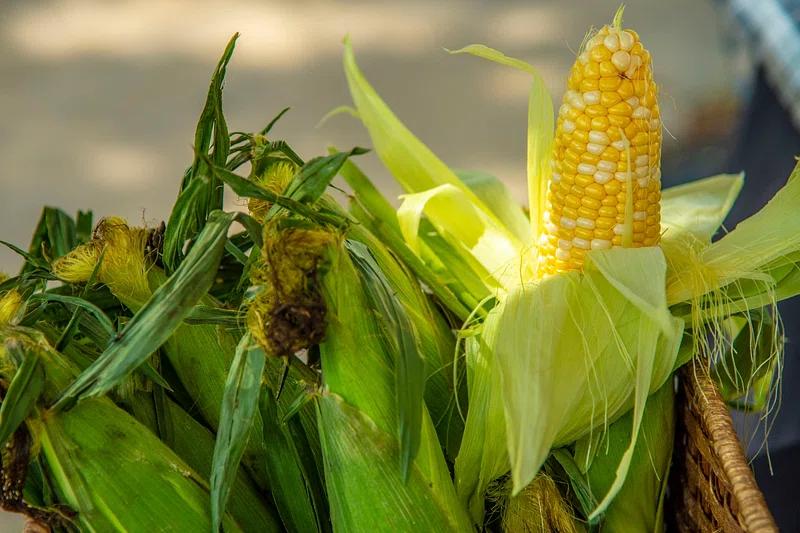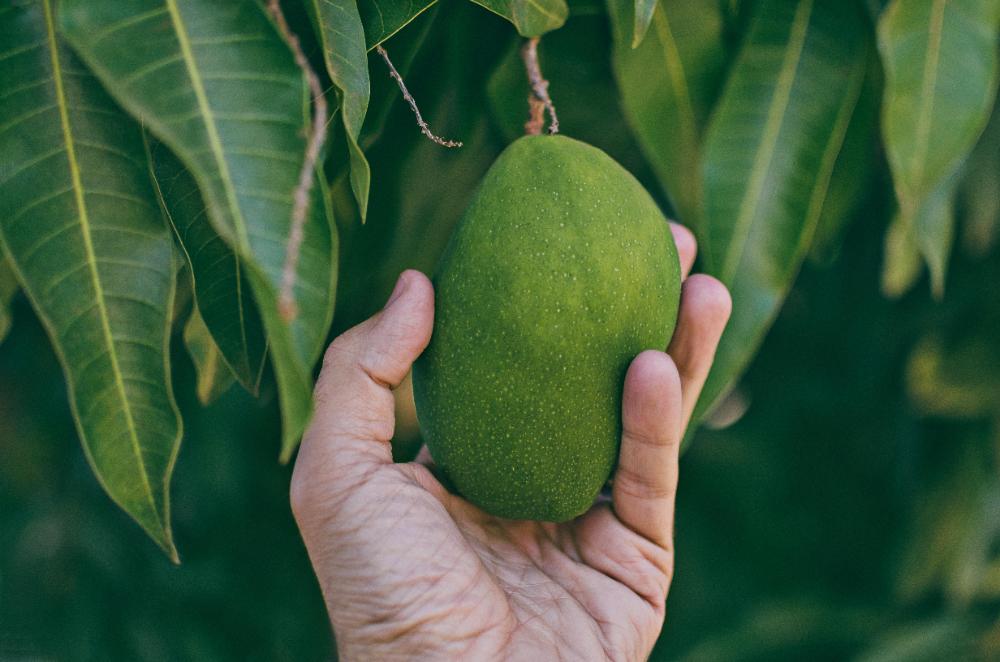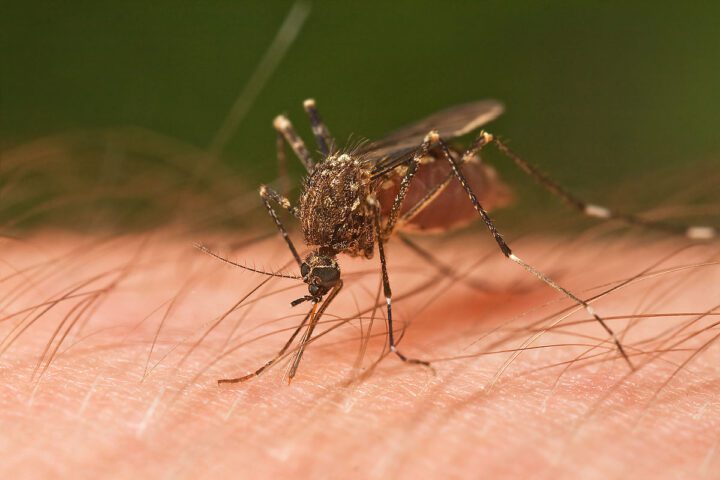Step outside in Des Moines on a sweltering July evening, and you’re not just feeling the heat—you’re experiencing the collective exhale of billions of corn plants. That sticky, oppressive humidity making your shirt cling to your back? Like a person breathing, corn exhales water vapor through its leaves — a process called evapotranspiration — which exacerbates humidity in agricultural regions during the summer.
According to Iowa state climatologist Justin Glisan, this is the time of the year when humidity contributions from corn sweat are highest — around the time of tasseling and pollination, typically hitting peak levels between mid-July and early August across the Cornbelt.
The numbers behind this agricultural perspiration are staggering. Just one acre of that corn can produce up to 4,000 gallons of water vapor, and release it into the atmosphere. Last year, an estimated 91.5 million acres of corn was planted in the United States. Do the math, and you’re looking at potentially 364 billion gallons of water vapor pumped into the atmosphere daily during peak season—roughly equivalent to about six days of water flowing over Niagara Falls.
The science behind corn sweat starts at the roots. Water absorbed from the soil travels up through the plant’s vascular system, eventually reaching the leaves where tiny pores called stomata release water vapor into the air. This process, evapotranspiration, combines evaporation from the soil surface with transpiration from the plant itself. While it sounds simple, the physics involved are complex enough that scientists use the Penman-Monteith equation—a sophisticated formula that approximates net evapotranspiration (ET) from meteorological data as a replacement for direct measurement of evapotranspiration.
The FAO-56 Penman-Monteith Equation standardizes calculations by assuming a hypothetical reference crop with crop height of 0.12 m, a fixed surface resistance of 70 s m-1 and an albedo value (i.e. portion of light reflected by the leaf surface) of 0.23. Scientists then apply crop coefficients (Kc) to adjust for specific plants like corn, which transpires differently than the reference grass standard.
What makes corn particularly effective at humidifying the air is its sheer biomass and efficiency. During tasseling—when corn reaches its maximum height and leaf area—a single plant can have a leaf surface area many times larger than the ground it occupies. Multiply that by thousands of plants per acre, and you’ve created nature’s own humidifier on an industrial scale.
A study published in 2020 analyzing the July 16-20, 2011 heat wave demonstrated just how powerful this effect can be. Researchers found that elevated moisture (up to 40%) from crops not only increases humidity (thus the heat index) but also provides a positive radiative forcing by increasing downward longwave radiation. The study utilized satellite total column water vapor retrievals from MODIS instruments to track moisture patterns, finding that excess moisture from crops is responsible for augmenting the values of heat index by as much as 5 °C at the peak of daily temperatures that predominantly happened in the afternoon.
Regional differences in corn sweat effects are striking. Rural areas with extensive farmland show a noticeable local impact on humidity levels. The effects of evapotranspiration are particularly pronounced in the afternoon and evening when temperatures are warmest, combining to produce heat index values that frequently exceed 100 degrees.
The contrast between agricultural and urban areas can be dramatic. In Michigan, dew point readings over the heavily farmed “Thumb” region often exceed those in Detroit by several degrees during peak corn sweat season. Eastern Ohio’s hilly terrain, with less intensive agriculture, similarly shows lower humidity than the flat cornfields of western Ohio.
But corn isn’t working alone in this atmospheric moisture pump. Soybeans also contribute substantial moisture through evapotranspiration. In other words, soybeans sweat, too. Research suggests soybeans can release comparable amounts of moisture to corn, particularly during their peak growth stages. Moisture also evaporates from bodies of water and even from the wet soils of areas with recent rains. Not to mention a good deal of the moisture that reaches the Corn Belt during summer is sourced from the Gulf of Mexico and sometimes even from the Pacific Ocean.
The interaction between Gulf moisture and local crop evapotranspiration creates a compounding effect. The current humidity is driven by more significant climate patterns such as large-scale atmospheric flows and its moisture advections (e.g. regional wind patterns). Corn sweat adds a substantial local boost to this baseline humidity, creating conditions that can push heat indices into dangerous territory.
During heat waves, the most dangerously hot and humid conditions often stretch across the Plains and Midwest, with major population centers facing elevated risks for heat-related impacts according to NOAA. The combination of high temperatures and extreme humidity creates particularly hazardous conditions for vulnerable populations.
The agricultural implications extend beyond human comfort. Warm nighttime temperatures can increase respiration in crops, the process by which plants convert sugar into energy. This can result in the loss of energy that could have otherwise increased crop yields, noted Iowa State University agronomist Meaghan Anderson. High humidity also creates ideal conditions for fungal diseases like gray leaf spot and northern corn leaf blight, which thrive in the moist microclimate within cornfields.
When water becomes scarce and atmospheric demand is high, corn leaves roll to reduce transpiration and conserve moisture. This physiological response occurs because the plant cannot maintain adequate water flow to keep up with evaporation demands. While leaf rolling can help the plant survive drought stress, it also reduces photosynthesis and can impact yields if the stress persists.
Measuring evapotranspiration accurately remains challenging. While the Penman-Monteith equation provides standardized calculations, actual field measurements require sophisticated equipment. Ground-based ET measurements are made at fine scales with lysimeters, flux towers and scintillometers, but are spatially sparse. Scientists increasingly turn to satellite data for regional estimates, though most previous methods depend on optical measurements that are limited to cloud-free conditions. This makes ET estimation challenging under cloudy sky.
The MODIS satellite system provides global evapotranspiration product data at 500-meter resolution, but is too coarse for local and regional water resource management in agricultural applications. Researchers are developing new methods to downscale this data to finer resolutions using advanced techniques like deep neural networks trained on Landsat imagery, pointing toward future applications of smart irrigation technologies.
Historical context reveals how dramatically agriculture has altered Midwest humidity patterns. Before European settlement, the region was dominated by tallgrass prairie with diverse plant species that had varied rooting depths and water needs. Diverse ecosystems create a balanced moisture cycle, as opposed to the uniformity of cornfields that draw water from the soil more quickly. Native prairie vegetation also reaches peak evapotranspiration earlier in the season, spreading moisture release across a longer timeframe rather than concentrating it in mid-summer.
An increase in evapotranspiration has also been linked to increased chances for rain, thunderstorms, and even severe weather. Some climatologists theorize that intense agricultural evapotranspiration could influence local precipitation patterns, though this remains an active area of research with ongoing studies examining these potential feedback loops.
Public health officials increasingly recognize corn sweat as a factor in heat-related illness. The combination of high temperatures and extreme humidity prevents effective cooling through perspiration—the human body’s primary temperature regulation mechanism. When dew points exceed 70°F, as they regularly do in agricultural areas during heat waves, sweat evaporates slowly, reducing cooling efficiency and increasing heat stress risk.
For those living in the Cornbelt, adapting to corn sweat means adjusting daily routines. Early morning activities become essential, as humidity typically peaks in late afternoon when both temperature and transpiration rates are highest. Air conditioning usage spikes, straining electrical grids already taxed by high temperatures. Health officials recommend drinking plenty of water and taking frequent breaks to avoid overheating in the higher humidity.
Looking ahead, agricultural practices may need to evolve to address corn sweat impacts. Some researchers suggest exploring crop varieties with different transpiration patterns or adjusting planting densities to reduce moisture release during critical heat periods. Others point to the potential for cover crops or buffer strips of native vegetation to moderate local humidity effects, similar to principles used in agroforestry systems.
The phenomenon also highlights interconnections between agriculture, weather, and human health that extend far beyond the farm gate. The billions of gallons of water vapor released by crops each summer represent both an agricultural success story—healthy, productive plants—and an emerging challenge in a warming world where infrastructure resilience becomes increasingly critical.
As climate patterns shift and agricultural technology advances, understanding corn sweat becomes crucial for everyone from farmers planning irrigation schedules to emergency managers preparing for heat waves. Corn sweat transforms the Midwest’s summer landscape in ways both visible and invisible. Next time you experience that characteristic wall of humidity on a July evening, you’re witnessing one of agriculture’s most impressive yet underappreciated phenomena—the collective breathing of millions of acres of crops, turning the nation’s breadbasket into its steam room. The science shows this isn’t just farmer folklore but a measurable force reshaping our understanding of how large-scale agriculture interacts with weather, climate, and human comfort across one of the world’s most productive agricultural regions.

















